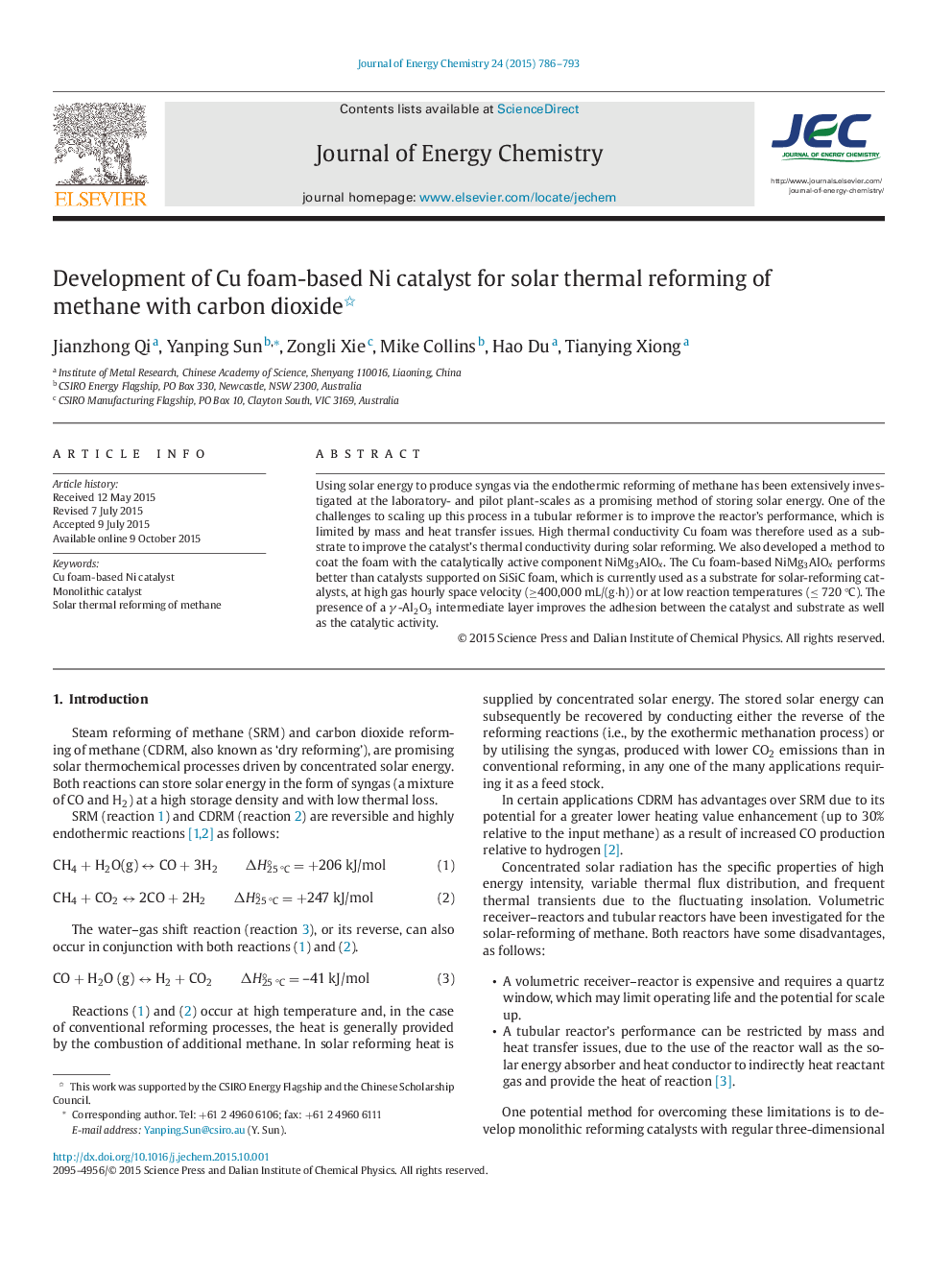| Article ID | Journal | Published Year | Pages | File Type |
|---|---|---|---|---|
| 63804 | Journal of Energy Chemistry | 2015 | 8 Pages |
Using solar energy to produce syngas via the endothermic reforming of methane has been extensively investigated at the laboratory- and pilot plant-scales as a promising method of storing solar energy. One of the challenges to scaling up this process in a tubular reformer is to improve the reactor's performance, which is limited by mass and heat transfer issues. High thermal conductivity Cu foam was therefore used as a substrate to improve the catalyst's thermal conductivity during solar reforming. We also developed a method to coat the foam with the catalytically active component NiMg3AlOx. The Cu foam-based NiMg3AlOx performs better than catalysts supported on SiSiC foam, which is currently used as a substrate for solar-reforming catalysts, at high gas hourly space velocity (≥400,000 mL/(g·h)) or at low reaction temperatures (≤ 720 °C). The presence of a γ-Al2O3 intermediate layer improves the adhesion between the catalyst and substrate as well as the catalytic activity.
Graphical abstract20Ni-γCu catalyst has higher activity as compared with the 20Ni-γSiSiC catalyst at 650 °C, similar activity at 720 °C and lower activity at 800 °C.Figure optionsDownload full-size imageDownload as PowerPoint slide
